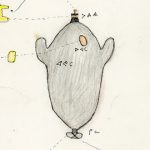Parents
Reading at home
Reading at home with your children has strong positive impact on learning in all disciplines. Here, we provide books that can be read on the computer or on a mobile device, as well as reading tips to support this activity. Make it a routine, just a few minutes everyday, and come back often to see our newly added books.
Inuktitut Grammar
Basic Sounds of Inuktitut
Sequences of Vowels
Sequences of Consonants
First and Last Sound of a Word
Consonant Groups Within a Word
Standard Orthography
Teaching Literacy
Words
Word Categories
Shared Properties of Nouns and Verbs
Deep form of Chunks
Truncating and Additive Chunks
Softenings
Assimilation Rules
Reduction of Vowel and Consonant Groups
Special Deletion of a Consonant
Rule of Double Consonants
Properties of Noun Endings
Non-Possessive Endings
Properties of Verb Endings
One-Person Verb Endings
Two-Person Verb Endings
Internal Structure of Nouns and Verbs
Grammatical Groups of Verb Bases
Grammatical Groups of Verb Makers
Grammatical Groups of Verb Extenders
Grammatical Groups of Noun Makers
Branching Structures
Productive Versus Non-Productive Postbase
Common Productive Postbases in Nunavimmiutitut
Exclamative Endings
Demonstrative Pronouns
Locative Pronouns
Interrogative Pronouns
Indefinite Pronouns
Reflexive Pronouns
Particles
Math at home
Supporting the learning of math at home can be simple and easy. In fact, you already do it in your daily activities. Here are some suggestions of ways in which you can help your children develop fluency in math in just a few minutes everyday. These suggestions are updated every week.
Counting Down
Guess my Number
Shapes Scavenger Hunt
Secondary Math & Science Applications
Math in Daily Activities
Activities to do at home
Learning happens everywhere. It is fun, it stems from natural curiosity and it develops your children’s understanding of the world. Here are some suggestions of simple activities that you can do at home to engage your children in learning activities.


